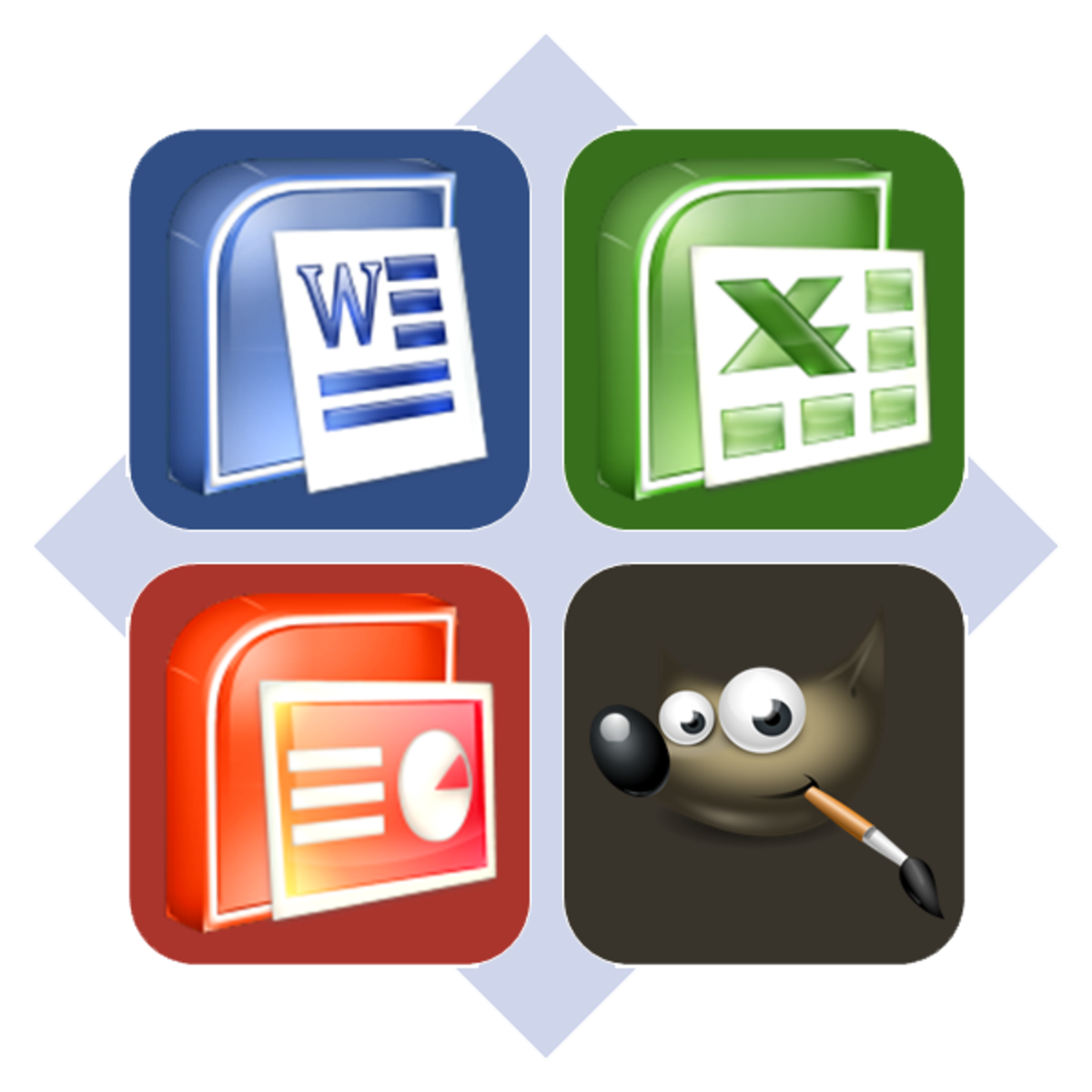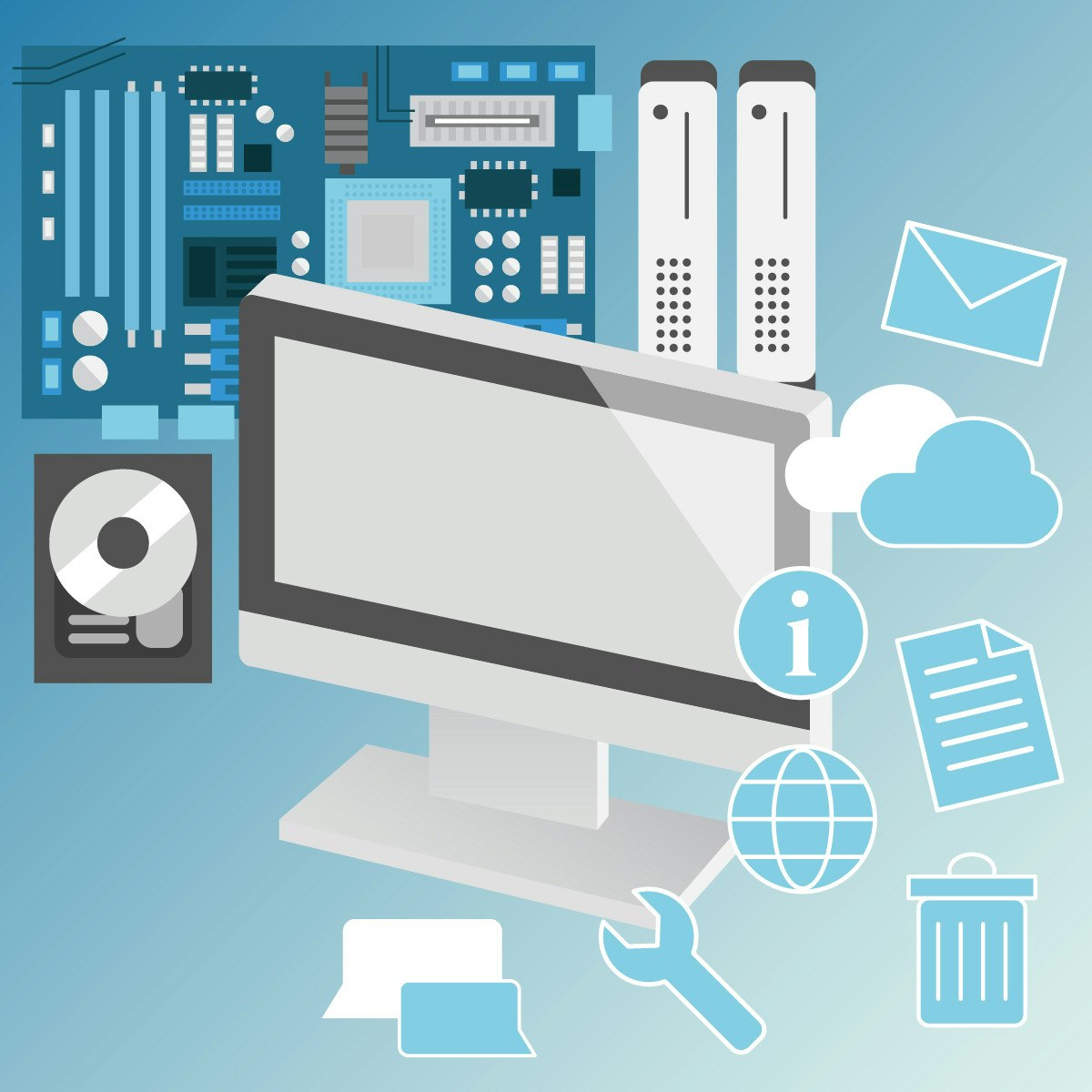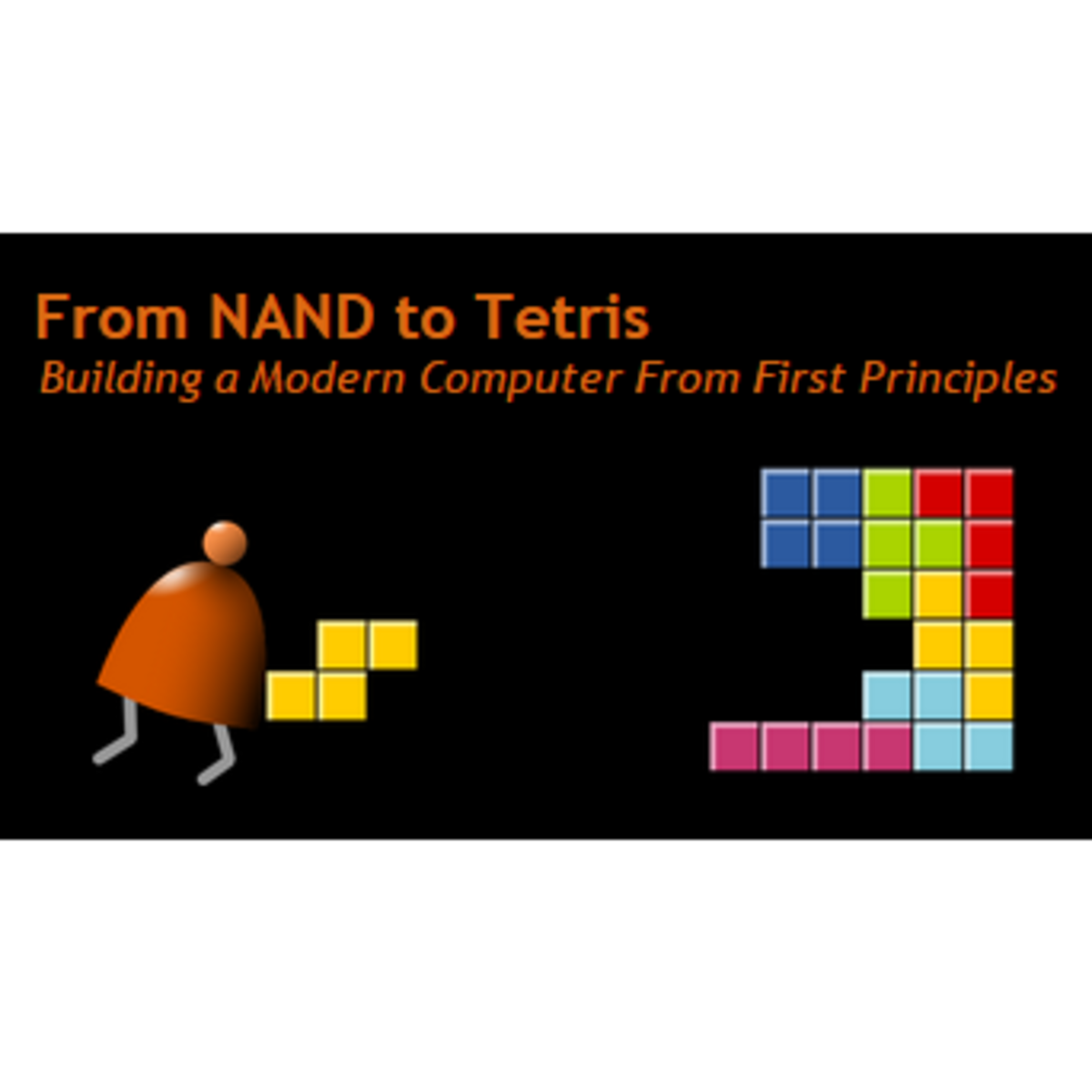Computer Software Engineer
Computer Software Engineer: A Comprehensive Career Guide
Computer Software Engineering is the application of engineering principles to the design, development, testing, maintenance, and evaluation of software and computer systems. At its core, it involves systematically creating reliable, efficient, and effective software solutions to solve real-world problems. This field blends creativity with analytical rigor, requiring professionals to understand both the technical intricacies of programming and the broader context in which software operates.
Embarking on a career as a Computer Software Engineer offers intellectually stimulating challenges and the opportunity to build impactful products. You might find yourself developing the next generation of mobile applications, designing complex enterprise systems, or contributing to cutting-edge research in areas like artificial intelligence. The collaborative nature of the work and the constant evolution of technology ensure a dynamic and engaging professional life.
What is Computer Software Engineering?
This section delves into the definition, scope, and core objectives of computer software engineering, clarifying its place within the broader technology landscape.
Defining the Discipline
Computer Software Engineering focuses on the systematic process of creating and maintaining software systems. It applies engineering discipline – involving analysis, design, construction, verification, and management – to the production of software. Unlike simply writing code, software engineering emphasizes structure, quality, maintainability, and collaboration throughout the software lifecycle.
The scope is vast, encompassing everything from tiny embedded systems controlling devices to massive, distributed systems powering global corporations and the internet. Software engineers work on operating systems, mobile apps, web platforms, games, business applications, scientific simulations, and much more. The goal is always to produce software that meets user needs reliably and efficiently.
Ultimately, software engineers strive to manage the complexity inherent in software development. They use established methodologies, design patterns, and tools to ensure projects are completed on time, within budget, and to the required quality standards. This systematic approach is crucial for building robust and scalable software solutions.
Distinguishing Software Engineering from Related Fields
While often used interchangeably, Computer Software Engineering differs from related fields like Computer Science and Web Development. Computer Science is broader, focusing on the theoretical foundations of computation, algorithms, data structures, and computational complexity. Software engineering applies these theoretical principles to the practical challenges of building real-world software.
Web Development specifically targets the creation of websites and web applications. While web developers are often software engineers, their focus is typically on technologies like HTML, CSS, JavaScript, and associated backend frameworks. Software engineering is a more encompassing term that includes web development but also covers areas like desktop applications, embedded systems, operating systems, and large-scale enterprise software.
Similarly, roles like Computer Programmer often focus more narrowly on writing and testing code based on specifications provided by others. A software engineer is typically involved in the entire lifecycle, including requirements gathering, system architecture, design, implementation, testing, deployment, and maintenance, requiring a broader skill set.
For those new to the field, understanding the basics of computation is essential. These courses offer a gentle introduction to computer science concepts.
Core Objectives in Modern Industries
The primary objective of a Computer Software Engineer is to deliver value by creating software solutions that solve specific problems or meet business needs. This involves translating user requirements into functional, reliable, and maintainable software systems. Quality, performance, security, and user experience are key considerations.
In today's industries, software engineers are also expected to contribute to innovation and efficiency. This might involve adopting new technologies, optimizing existing systems, automating processes, or developing features that provide a competitive advantage. They must balance technical excellence with business objectives and user needs.
Furthermore, modern software engineering emphasizes collaboration and communication. Engineers work closely with product managers, designers, quality assurance testers, and other stakeholders. The objective is not just to write code, but to contribute effectively to a team effort aimed at delivering successful software products.
Understanding the underlying hardware and software interaction is fundamental. This course delves into how computers work from the ground up.
Roles and Responsibilities
This section outlines the typical day-to-day activities, collaborative aspects, and long-term responsibilities of a Computer Software Engineer.
A Day in the Life: Tasks and Activities
A typical day for a software engineer involves a mix of focused technical work and collaboration. Writing code is a central activity, involving translating designs and requirements into functional software using various programming languages. This often requires deep concentration and problem-solving skills.
Debugging is another frequent task. Engineers spend significant time identifying, analyzing, and fixing defects or bugs in the software. This involves using debugging tools, analyzing logs, and systematically testing code to pinpoint the root cause of issues.
System design and architecture discussions are also common, especially for more senior engineers. This involves planning the structure of software components, defining interfaces, selecting appropriate technologies, and ensuring the system is scalable, maintainable, and secure. This often happens collaboratively in meetings or design sessions.
Collaboration Across Teams
Software engineering is rarely a solo endeavor. Engineers constantly collaborate with various cross-functional teams. They work closely with Product Managers to understand requirements, define features, and prioritize tasks based on business value and user needs.
Interaction with Quality Assurance (QA) engineers is crucial for ensuring software quality. Software engineers rely on QA testers to identify bugs and provide feedback, and they work together to resolve issues and improve test coverage. Close collaboration ensures a smoother development and release process.
Collaboration extends to designers (for user interface and experience), operations teams (for deployment and infrastructure), and other software engineers (through code reviews, pair programming, and knowledge sharing). Effective communication and teamwork skills are therefore essential for success in this role.
Project Ownership and Maintenance
Beyond initial development, software engineers often take ownership of specific features, components, or even entire systems. This involves responsibility for the long-term health and evolution of the software they build.
Maintenance is a significant part of this ownership. This includes fixing bugs discovered after release, updating software to adapt to new requirements or technologies, optimizing performance, and ensuring security vulnerabilities are addressed promptly. It requires a deep understanding of the existing codebase and system architecture.
Long-term project ownership also means contributing to the strategic direction of the software. Engineers may propose improvements, refactor code for better maintainability, or advocate for adopting new tools and practices to enhance the system over time. This proactive approach is vital for the longevity and success of software products.
These books cover fundamental concepts in computer architecture and system design, crucial for long-term project understanding.
Formal Education Pathways
For many aspiring software engineers, a structured academic path provides the necessary foundation. This section explores common educational routes.
High School Foundation
Building a strong foundation in high school is beneficial for pursuing software engineering. Focusing on STEM (Science, Technology, Engineering, and Mathematics) subjects is key. Advanced coursework in mathematics, particularly calculus and discrete math, provides essential analytical skills.
Physics courses help develop problem-solving abilities and an understanding of physical systems, which can be relevant in areas like embedded systems or simulation software. Taking introductory computer science or programming classes, if available, offers a valuable head start.
Developing strong communication and writing skills is also important, as software engineers need to document their work and collaborate effectively. Participating in coding clubs, math competitions, or science fairs can further enhance relevant skills and demonstrate interest.
Undergraduate Studies
A bachelor's degree in Computer Science, Software Engineering, or a closely related field like Computer Engineering is the most common entry point into the profession. These programs provide a comprehensive theoretical and practical foundation.
Essential coursework typically includes data structures and algorithms, operating systems, computer architecture, database management, software design principles, and programming languages. Theoretical computer science courses provide the underpinnings for solving complex computational problems.
Many programs also incorporate practical elements like software development projects, internships, or co-op programs. These experiences are invaluable for applying classroom knowledge to real-world scenarios and building a professional network. Exploring different areas within the curriculum can help identify potential specializations.
These courses offer a glimpse into university-level computer science fundamentals.
Foundational knowledge of operating systems and computer architecture is often covered in undergraduate programs. These books are classic references in those areas.
Graduate Degrees and Specialization
While not always required for entry-level positions, a master's or doctoral degree can open doors to specialized roles, research positions, or leadership opportunities. Graduate programs allow for deeper exploration of specific areas within computer science and software engineering.
Common areas of specialization include Artificial Intelligence/Machine Learning, Cybersecurity, Data Science, Human-Computer Interaction, Distributed Systems, Computer Graphics, and Theoretical Computer Science. Research-focused programs involve contributing new knowledge to the field through thesis or dissertation work.
A graduate degree can be particularly beneficial for those aiming for roles in cutting-edge research and development or academic positions. It signals advanced expertise and a commitment to a specific domain within the broader field of software engineering.
Self-Directed Learning and Online Resources
Formal education isn't the only path. Many successful software engineers built their skills through independent study, leveraging the wealth of online resources available today.
Acquiring Core Skills Independently
It is entirely possible to learn the core technical skills required for software engineering outside of a traditional university setting. The internet offers a vast array of tutorials, documentation, and online courses covering programming languages, data structures, algorithms, databases, and web development frameworks.
Platforms like OpenCourser aggregate courses from various providers, making it easier to find resources tailored to specific learning goals. Starting with foundational concepts like programming logic and a versatile language (such as Python or JavaScript) is often recommended. Consistency and dedication are key to making progress.
Building a structured learning plan can help navigate the abundance of information. Focusing on fundamentals first, then gradually tackling more complex topics and specific technologies, provides a solid base for further learning and specialization.
Online courses offer structured paths to learn fundamental and specialized skills. These courses focus on specific architectures or programming paradigms.
The Power of Project-Based Learning
Theoretical knowledge alone is insufficient; applying concepts through practical projects is crucial for developing real engineering skills. Start with small, manageable projects and gradually increase complexity as your skills grow. Examples include building a simple calculator, a personal website, a to-do list application, or a basic game.
Contributing to open-source projects is another excellent way to gain practical experience, learn from experienced developers through code reviews, and build a portfolio. Platforms like GitHub host countless open-source projects seeking contributors of all skill levels.
Project-based learning not only reinforces technical skills but also helps develop problem-solving abilities, debugging techniques, and an understanding of the software development lifecycle. It transforms passive learning into active creation.
This comprehensive book covers ARM architecture, often used in project-based learning for embedded systems.
Validating Skills: Portfolios and Certifications
For self-taught engineers or those transitioning careers, demonstrating skills to potential employers is vital. A strong portfolio showcasing completed projects serves as tangible proof of ability. Include descriptions of the projects, the technologies used, and your specific contributions.
While not a substitute for practical skills, industry certifications can sometimes help validate knowledge in specific technologies (e.g., cloud platforms like AWS, Azure, Google Cloud, or specific programming languages). However, a compelling portfolio of projects generally carries more weight in hiring decisions.
Actively participating in online developer communities, contributing to discussions, and sharing your work can also build credibility. Networking, attending meetups (virtual or in-person), and continuously learning are essential parts of establishing yourself in the field, regardless of your educational background.
OpenCourser's Learner's Guide offers tips on how to effectively use online courses and build a portfolio to showcase your skills.
Career Progression and Industry Hierarchy
Understanding the typical career path helps aspiring and current software engineers plan their professional development.
From Entry-Level to Senior Roles
Careers typically begin in entry-level or junior software engineer roles. At this stage, the focus is on learning the codebase, contributing to smaller features or bug fixes under supervision, and absorbing team practices and processes. Strong foundational programming skills and a willingness to learn are crucial.
With experience (usually 2-5 years), engineers progress to mid-level roles. They demonstrate more autonomy, tackle more complex tasks, contribute to design discussions, and may mentor junior engineers. They have a solid grasp of the systems they work on and contribute reliably to team goals.
Senior software engineers (often 5+ years of experience) possess deep technical expertise and often lead significant projects or initiatives. They influence technical direction, mentor other engineers, solve complex architectural problems, and contribute to strategic decisions. They demonstrate strong ownership and impact.
Promotion Criteria and Timelines
Promotions are typically based on a combination of technical competence, impact, scope of influence, and leadership abilities. Consistent high-quality code delivery, tackling increasingly complex problems, and demonstrating ownership are key technical criteria.
Impact is measured by the engineer's contributions to project success, team productivity, or business goals. Scope of influence refers to the breadth of their contributions – from individual tasks to team-level initiatives or cross-functional projects. Leadership can involve technical guidance, mentoring, or driving process improvements.
Timelines vary significantly based on individual performance, company structure, and industry norms. Moving from junior to mid-level might take 2-5 years, and reaching a senior level typically requires at least 5 years, though exceptional individuals may progress faster. Performance reviews and feedback cycles are standard mechanisms for evaluating readiness for promotion.
Salary expectations generally increase with seniority and experience. Resources like the U.S. Bureau of Labor Statistics Occupational Outlook Handbook provide general data on salary ranges, although actual compensation varies widely by location, industry, and company.
Alternative Paths: Management vs. Technical Leadership
Beyond the senior level, career paths often diverge. One common path is moving into engineering management, focusing on leading teams, managing projects, developing people, and aligning technical work with business strategy. This requires strong leadership, communication, and organizational skills.
Alternatively, engineers can pursue a purely technical leadership track, often referred to as Staff, Principal, or Distinguished Engineer roles. These individuals remain deeply technical, tackling the most complex architectural challenges, setting technical strategy, mentoring senior engineers, and representing the company in technical forums. This path emphasizes deep technical expertise and influence.
Some engineers may also transition into related roles like Product Management, Technical Program Management, or Solutions Architecture, leveraging their technical background in different capacities. The choice often depends on individual interests, strengths, and career aspirations.
Industry Trends Impacting the Role
The field of software engineering is constantly evolving. Staying aware of key trends is crucial for career longevity and relevance.
Emerging Technologies and Their Influence
Artificial Intelligence (AI) and Machine Learning (ML) are significantly impacting software engineering. Engineers increasingly integrate AI/ML models into applications, utilize AI-powered coding assistants, and develop software for AI-driven systems. Understanding AI/ML concepts is becoming progressively more valuable.
Cloud computing remains dominant, with engineers needing proficiency in platforms like AWS, Azure, or Google Cloud. Trends within the cloud, such as serverless computing and containerization (Docker, Kubernetes), continue to shape how software is built, deployed, and scaled.
Other emerging areas like quantum computing, blockchain applications beyond cryptocurrency, and advancements in cybersecurity present new challenges and opportunities for software engineers willing to specialize and adapt.
This book explores system and architecture engineering, relevant as systems become more complex.
Remote Work and Global Collaboration
The prevalence of remote work has significantly changed the landscape for software engineers. Many now work fully remotely or in hybrid models, offering greater flexibility but also requiring strong self-discipline and remote communication skills.
This shift enables collaboration across geographically distributed teams. Engineers increasingly work with colleagues from different time zones and cultural backgrounds, necessitating effective asynchronous communication tools and practices. Companies benefit from access to a global talent pool.
However, managing remote teams effectively, maintaining team cohesion, and ensuring equitable opportunities for remote employees present ongoing challenges for organizations and individuals alike. Tools and processes for remote collaboration continue to evolve.
Sustainability in Software Development
There is growing awareness of the environmental impact of technology, including software and the infrastructure it runs on. "Green software engineering" focuses on designing, developing, and running software that is energy-efficient and has a minimal carbon footprint.
This involves optimizing code for performance, choosing energy-efficient hardware and cloud resources, minimizing data transfer, and designing systems that scale down effectively when idle. Engineers are increasingly expected to consider sustainability alongside performance, cost, and reliability.
Organizations are also facing pressure from regulators and consumers to report and reduce their environmental impact. Software engineers play a role in developing tools and practices to measure and minimize the energy consumption associated with digital services.
Technical Skills and Tools
Mastery of specific technical skills and tools is fundamental to the practice of software engineering.
Programming Languages and Ecosystems
Proficiency in one or more programming languages is essential. Popular choices include Python (versatile, widely used in web development, data science, AI), JavaScript (dominant for front-end web development, also used on the backend with Node.js), Java (common in large enterprises, Android development), C# (popular for Windows applications, game development with Unity), C++ (used in systems programming, game engines, high-performance computing), and Go (increasingly popular for backend systems and cloud infrastructure).
Beyond the language itself, understanding its ecosystem – common libraries, frameworks (e.g., React, Angular, Vue for JavaScript; Spring for Java; Django, Flask for Python), build tools, and package managers – is crucial for productivity. Specialization often involves deep expertise in a particular language and its ecosystem.
Choosing which languages to learn depends on career goals and industry demand. Many engineers become proficient in multiple languages throughout their careers. You can explore various programming languages and frameworks through online programming courses.
This classic text covers digital design principles underlying computer hardware, which influences software performance.
Essential Development Tools
Software engineers rely on a suite of tools to streamline their workflow. Integrated Development Environments (IDEs) like VS Code, IntelliJ IDEA, Eclipse, or Visual Studio provide code editing, debugging, and project management features.
Version Control Systems (VCS), particularly Git, are indispensable for managing code changes, collaborating with others, and maintaining project history. Platforms like GitHub, GitLab, and Bitbucket host Git repositories and provide additional collaboration features.
Continuous Integration and Continuous Deployment (CI/CD) pipelines automate the process of building, testing, and deploying software. Tools like Jenkins, GitLab CI, GitHub Actions, and CircleCI help ensure code changes are integrated and released reliably and frequently.
Cloud Platforms and Containerization
Modern software development is heavily reliant on cloud platforms. Familiarity with at least one major cloud provider (AWS, Azure, Google Cloud Platform) is increasingly expected. This includes understanding core services for compute, storage, databases, networking, and deployment.
Containerization technologies, primarily Docker, allow packaging applications and their dependencies together, ensuring consistency across different environments. Orchestration tools like Kubernetes manage containerized applications at scale, automating deployment, scaling, and operations.
Understanding these technologies is vital for building scalable, resilient, and deployable applications in today's cloud-native world. Many roles now specifically require experience with cloud platforms and containerization tools. You can find courses on these topics by browsing the Cloud Computing category.
Ethical Considerations in Software Engineering
As software becomes more pervasive, engineers face increasingly complex ethical responsibilities.
Data Privacy and Security Obligations
Software engineers have a responsibility to design and build systems that protect user data and privacy. This involves implementing robust security measures, adhering to privacy regulations (like GDPR or CCPA), and being transparent about data collection and usage practices.
Security cannot be an afterthought; it must be integrated throughout the software development lifecycle ("SecDevOps"). This includes writing secure code, performing security testing, managing dependencies carefully, and responding promptly to vulnerabilities. Breaches can have severe consequences for users and organizations.
Engineers must advocate for ethical data handling practices within their teams and organizations, even when faced with pressure to prioritize features or speed over privacy and security. Understanding potential attack vectors is crucial.
This course explores specific types of hardware/software attacks and mitigations.
Mitigating Algorithmic Bias
Algorithms, particularly those used in AI and machine learning, can perpetuate and even amplify existing societal biases if not carefully designed and tested. Software engineers involved in developing these systems have an ethical obligation to strive for fairness and mitigate bias.
This involves being aware of potential sources of bias in data and algorithms, using techniques to detect and measure bias, and implementing strategies to reduce unfair outcomes across different demographic groups. It requires careful consideration of the potential societal impact of the software being built.
Collaboration with domain experts, ethicists, and diverse user groups is important for identifying and addressing potential biases. Transparency about how algorithms work and ongoing monitoring for biased outcomes are also key components of responsible AI development.
Environmental Impact and Sustainable Computing
The technology sector consumes significant amounts of energy and resources. Software engineers contribute to this impact through the software they create and the infrastructure choices they make. There is an ethical dimension to minimizing this environmental footprint.
As mentioned earlier, practices like optimizing code for energy efficiency, choosing greener cloud providers or hardware, designing systems for efficient resource utilization, and reducing unnecessary data processing or storage contribute to sustainability.
Engineers should be aware of the environmental implications of their technical decisions and advocate for more sustainable practices within their organizations. This aligns technical work with broader societal goals of environmental responsibility.
Global Market Outlook
Understanding the global landscape is important for career planning, especially regarding location and long-term prospects.
Regional Demand and Tech Hubs
Demand for skilled software engineers remains strong globally, but specific needs vary by region and industry. Major tech hubs like Silicon Valley, Seattle, New York, London, Berlin, Bangalore, and Tel Aviv continue to offer numerous opportunities, but often come with a high cost of living.
Emerging tech hubs are also growing rapidly in various parts of the world, offering potentially lower living costs and new opportunities. The rise of remote work has further distributed opportunities, allowing engineers to work for companies based elsewhere.
Researching specific geographic markets is important for those considering relocation. Factors like industry focus (e.g., finance in New York/London, automotive in Stuttgart, gaming in various hubs), salary expectations, and quality of life vary significantly.
Visa and Immigration Factors
For engineers seeking opportunities outside their home country, navigating visa and immigration requirements is a critical consideration. Policies vary widely and can change, impacting the ease of relocation and long-term residency prospects.
Many countries have specific visa programs designed to attract skilled tech workers, but requirements regarding education, experience, and job offers differ. Companies hiring internationally often provide support with the visa application process, but understanding the general landscape is helpful.
Remote work can sometimes circumvent immediate relocation needs, but tax implications and legal requirements for employing international remote workers can still be complex for companies.
Impact of Automation and AI
The potential impact of automation and AI on software engineering jobs is a frequent topic of discussion. While AI tools can automate certain coding tasks and assist developers, they are currently viewed more as productivity enhancers than replacements for skilled engineers.
AI may automate repetitive or boilerplate coding, freeing up engineers to focus on more complex problem-solving, system design, and creative tasks. However, the nature of the role may evolve, requiring engineers to adapt and develop skills in working alongside AI tools effectively.
According to the U.S. Bureau of Labor Statistics, employment for software developers, quality assurance analysts, and testers is projected to grow much faster than the average for all occupations over the next decade, suggesting continued strong demand despite automation trends. Continuous learning and adaptation will remain crucial.
Frequently Asked Questions
Here are answers to some common questions about pursuing a career as a Computer Software Engineer.
Can I become a software engineer without a formal degree?
Yes, it is definitely possible. While a computer science or related degree is a common path, many successful software engineers are self-taught or transitioned from other fields. What matters most to employers is demonstrated skill and ability.
Building a strong portfolio of personal projects, contributing to open-source software, and potentially earning relevant certifications can effectively showcase your capabilities. Networking and preparing thoroughly for technical interviews are also crucial steps for those without a traditional academic background.
The journey might require more self-discipline and proactive effort to structure learning and gain credibility, but dedication and proven ability can overcome the lack of a formal degree in many companies, particularly startups and tech-focused organizations.
How might Artificial Intelligence affect job security in this field?
AI is expected to change the nature of software engineering work rather than eliminate jobs wholesale in the near future. AI tools can automate routine tasks, enhance productivity (e.g., AI code completion, bug detection), and potentially lower the barrier to entry for some aspects of development.
Engineers will likely need to adapt by learning how to leverage AI tools effectively and focusing on higher-level skills that are harder to automate, such as complex problem-solving, system architecture, creativity, strategic thinking, and collaboration.
While some specific tasks might become automated, the overall demand for individuals who can design, build, and manage complex software systems is projected to remain high. Continuous learning and skill adaptation will be key to navigating these changes.
What industries employ the most software engineers?
Software engineers are in demand across nearly every industry today. The technology sector itself (software companies, internet services, hardware manufacturers) is a major employer. However, significant numbers are also employed in finance, healthcare, retail, entertainment, automotive, aerospace, government, and education.
Financial services firms rely heavily on software for trading platforms, risk management, and customer applications. Healthcare uses software for electronic health records, medical imaging, and research. E-commerce and retail depend on sophisticated software for online sales, logistics, and inventory management.
Essentially, any industry undergoing digital transformation requires software engineers to build and maintain the necessary systems. This wide applicability provides diverse career options and some resilience against downturns in any single sector.
Is age a significant barrier to entering this career?
While the tech industry sometimes has a reputation for favoring younger workers, age itself shouldn't be an insurmountable barrier, especially for career changers bringing valuable experience from other fields. Skills, adaptability, and a willingness to learn are more important than age.
Career pivoters can highlight transferable skills like problem-solving, project management, communication, and domain expertise from their previous careers. Demonstrating current technical skills through projects and continuous learning is crucial.
It may require persistence and targeting companies with inclusive cultures, but many organizations value the diverse perspectives and experiences that older professionals bring. Focusing on demonstrating value and staying current with technology can mitigate potential age bias.
How important are "soft skills" in a technical role like this?
Soft skills are extremely important for software engineers. While technical proficiency is fundamental, skills like communication, teamwork, problem-solving, empathy, and time management are critical for success. Engineers rarely work in isolation.
Clear communication is needed to understand requirements, explain technical concepts to non-technical stakeholders, document work, and participate in code reviews. Teamwork is essential for collaborating effectively within development teams and across functions (product, design, QA).
Problem-solving extends beyond technical bugs to include navigating project challenges and finding pragmatic solutions. Empathy helps in understanding user needs and collaborating respectfully with colleagues. Strong soft skills often differentiate successful engineers, especially in senior and leadership roles.
What are common exit opportunities or alternative career paths?
Software engineering provides a strong foundation for various career paths. As mentioned earlier, common progressions include Engineering Management or senior technical leadership roles (Principal/Staff Engineer).
Many engineers leverage their technical and product understanding to move into Product Management, shaping the direction of software products. Technical Program Management, focusing on coordinating complex cross-functional projects, is another option.
Some transition into Solutions Architecture or Sales Engineering, helping clients design and implement technical solutions. Others may become Developer Advocates, engaging with the developer community. Entrepreneurship, starting one's own tech company, is also a path some engineers pursue after gaining experience.
Embarking on or advancing in a Computer Software Engineering career requires continuous learning, adaptability, and a blend of technical and collaborative skills. Whether pursuing formal education or self-directed learning paths, resources like OpenCourser can help you find the courses and knowledge needed to build a successful and rewarding career in this dynamic field.











